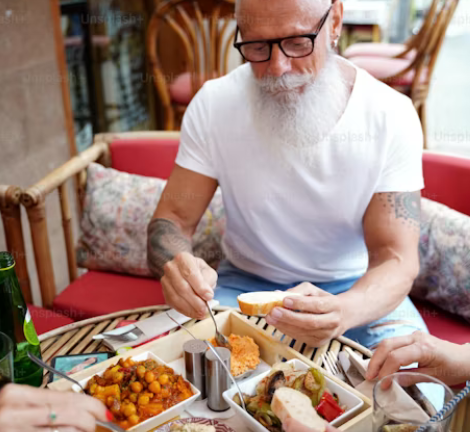Food is more than sustenance; it is a cultural artifact that embodies history, traditions, and values passed down through generations. Culinary traditions play a vital role in preserving cultural heritage, offering a window into the diverse customs, rituals, and beliefs that define communities around the world. From the spices of India to the pasta of Italy, culinary traditions serve as a testament to the ingenuity and creativity of societies, reflecting their environment, history, and social interactions.
In every corner of the globe, culinary traditions are deeply intertwined with cultural identity, shaping daily rituals, celebrations, and social gatherings. These traditions are often rooted in geographical landscapes and natural resources, with recipes evolving over centuries to incorporate local ingredients and techniques that sustain communities and reflect their unique histories. Through food, generations transmit knowledge, stories, and values that celebrate resilience, adaptation, and innovation in the face of social, economic, and environmental changes.
In Italy, the art of pasta-making is a cornerstone of culinary tradition, with each region boasting its own distinctive shapes, sauces, and preparation methods. From the long, flat noodles of tagliatelle in Emilia-Romagna to the tube-shaped rigatoni of Rome’s amatriciana, Italian pasta reflects the country’s rich agricultural heritage and diverse culinary influences. Pasta-making traditions have been passed down through families and communities, with each generation adding their own twist to classic recipes while honoring time-honored techniques that ensure pasta’s al dente texture and savory flavors.
Similarly, in Japan, the preparation and presentation of sushi are steeped in centuries-old traditions that emphasize precision, craftsmanship, and respect for seasonal ingredients. Sushi chefs, or itamae, undergo years of rigorous training to master techniques such as sushi rice preparation, fish selection, and knife skills that elevate sushi-making to an art form. Sushi represents not only a culinary delicacy but also a cultural practice that reflects Japan’s reverence for nature, simplicity, and harmony—a philosophy embodied in the aesthetics and flavors of each meticulously crafted sushi roll or nigiri.
In Mexico, the ancient tradition of corn cultivation has shaped the country’s culinary landscape, with dishes like tamales, tortillas, and pozole serving as symbols of cultural identity and resilience. Corn, or maize, holds sacred status in Mexican culture, revered as the source of sustenance and spiritual nourishment for indigenous communities. The process of nixtamalization—where corn is soaked and cooked with lime or ash—transforms maize into masa, a dough used to make tortillas and other traditional dishes that have sustained Mexican communities for centuries.
Across Africa, culinary traditions vary widely, reflecting the continent’s diverse cultures, climates, and landscapes. In West Africa, dishes like jollof rice—a spicy rice dish with tomatoes, onions, and peppers—and fufu—a starchy side dish made from cassava, yams, or plantains—are central to daily meals and festive occasions, celebrating communal values and hospitality. In Ethiopia, injera—a spongy flatbread made from teff flour—is a staple food that serves as both a utensil and a meal accompaniment, symbolizing the importance of sharing meals and breaking bread with family and friends.
In India, spices such as turmeric, cumin, and cardamom are fundamental to the country’s culinary traditions, imparting vibrant colors and complex flavors to dishes like biryani, masala chai, and paneer tikka. Indian cuisine is renowned for its regional diversity, with each state boasting its own signature dishes, cooking techniques, and spice blends that reflect local ingredients and cultural influences. Culinary traditions in India are intertwined with religious practices, seasonal festivals, and social customs, with food serving as a form of cultural expression and hospitality that brings communities together.
In the United States, culinary traditions are a melting pot of influences from around the world, shaped by immigration, cultural exchange, and regional ingredients. Southern cuisine, for example, celebrates the flavors of soul food—fried chicken, collard greens, and cornbread—that originated in African American communities and have become iconic dishes enjoyed nationwide. Similarly, Cajun and Creole cuisines in Louisiana blend French, African, and Native American culinary traditions, yielding dishes like gumbo, jambalaya, and beignets that reflect the region’s cultural diversity and culinary creativity.
The preservation of culinary traditions is not only a means of honoring the past but also a way of fostering community resilience, promoting sustainable food practices, and nurturing cultural pride and identity. In an increasingly globalized world, culinary traditions serve as touchstones that connect individuals to their roots, encourage intergenerational storytelling, and inspire creativity in the kitchen. Through food festivals, cooking classes, and cultural exchanges, communities celebrate their culinary heritage, share knowledge, and pass on cherished recipes and techniques that embody the essence of their cultural identity.
In conclusion, culinary traditions are a testament to the resilience, creativity, and cultural richness of societies around the world. Through the art of cooking and sharing meals, communities preserve their heritage, strengthen social bonds, and celebrate the diversity of flavors, ingredients, and techniques that define their culinary landscapes. By honoring culinary traditions, supporting local food systems, and embracing cultural diversity, individuals contribute to the preservation of cultural heritage and promote global understanding, one delicious dish at a time.





